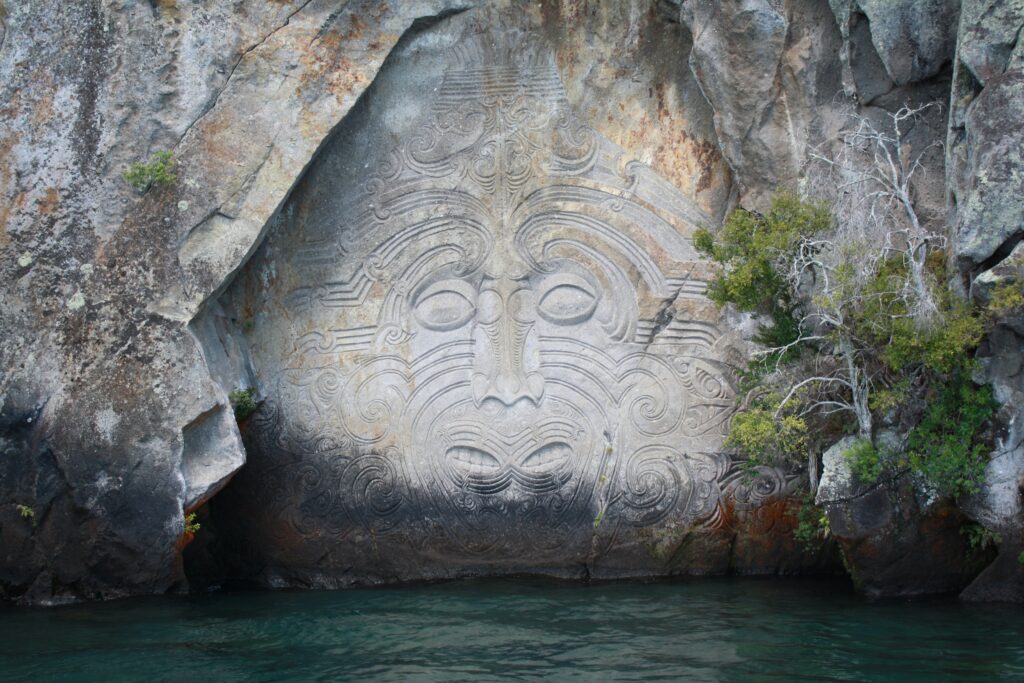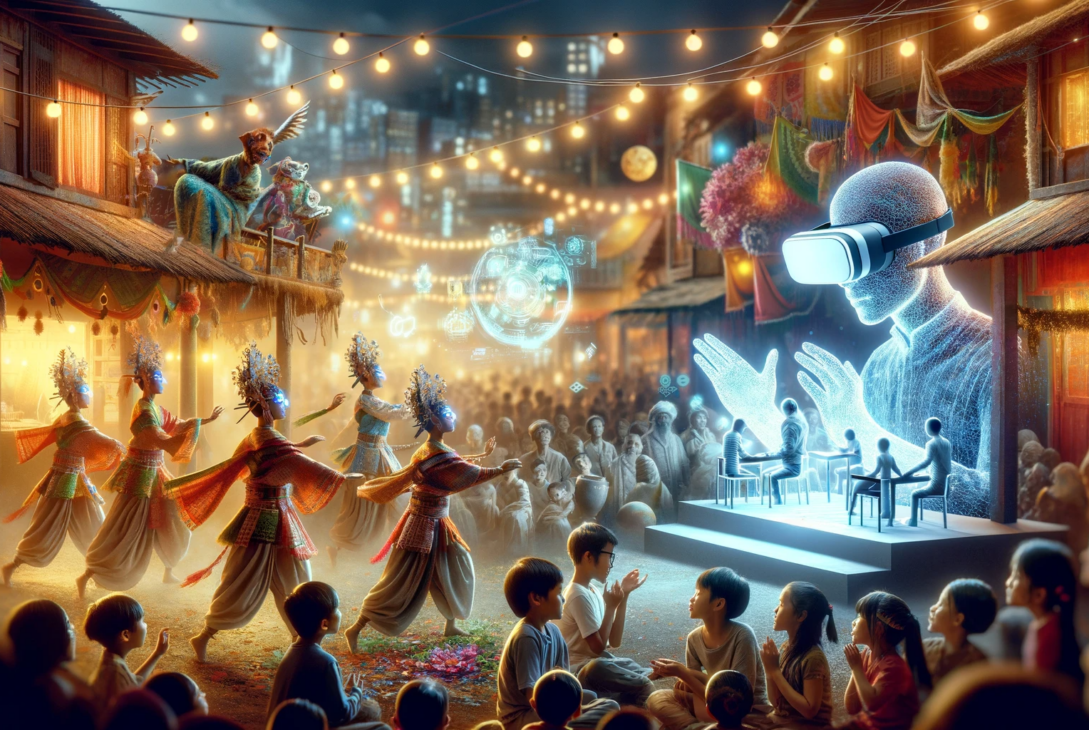In the tapestry of human culture, technology has always played a pivotal role, weaving new patterns into the fabric of our rituals, festivals, and storytelling traditions. As we stride into an era where technological advancements occur at a breakneck pace, it’s crucial to explore how these developments are not just reshaping our future but also redefining our past and present cultural practices. This exploration offers a unique lens to view technology, not merely as a tool for efficiency or entertainment but as a transformative agent in the very rituals and narratives that define us.
Reviving Ancient Rituals through Modern Tech
In the heart of Kyoto, Japan, an ancient festival known as ‘Gion Matsuri,’ celebrated for over a thousand years, has recently seen a technological revival. Once reliant solely on oral tradition and hand-crafted artifacts, the festival now incorporates augmented reality (AR) experiences. Visitors, through their smartphones, can see historical figures and events come to life, overlaying the modern streets with a virtual recreation of the festival’s storied past. This blend of AR technology with traditional practices has not only enhanced the visitor experience but also served as a bridge between generations, allowing younger participants to connect with their heritage in a language they understand – the language of technology.
This fusion is not limited to Japan. In Mexico, the ‘Day of the Dead,’ a vibrant celebration honoring departed loved ones, has seen similar digital enhancements. Local artists now use projection mapping technology to cast breathtaking, colorful animations on buildings and altars, adding a dynamic layer to the traditional papel picado and marigold decorations. These technological interventions, while modern, respect and amplify the cultural essence of the festival, illustrating how technology can breathe new life into ancient traditions without eroding their core values.
Technology’s Role in Evolving Festivals
Festivals worldwide, from the electric buzz of Rio’s Carnival to the spiritual serenity of India’s Diwali, are experiencing a technological metamorphosis. In Brazil, the once purely physical experience of Carnival has expanded into the digital realm. With virtual reality (VR), people from around the globe can don VR headsets and immerse themselves in the pulsating rhythms and vivid colors of the Carnival parades. This digital expansion not only democratizes the experience, allowing those unable to travel to Rio to partake in the festivities but also opens a new avenue for cultural exchange and understanding.

Photo by Udayadiya Barua on unsplash.
In India, Diwali, the festival of lights, traditionally celebrated with earthen lamps, has seen a sustainable and creative transformation through LED lighting. Families and communities are now creating intricate patterns and designs using energy-efficient LEDs, which not only provide a safer alternative to fire-based lamps but also offer a wider palette for artistic expression. This shift, driven by technological advancement, showcases how new technologies can enhance cultural practices while contributing to environmental sustainability.
Transforming Traditional Storytelling
The art of storytelling, an intrinsic part of human culture, has perhaps witnessed the most profound impact of technology. In Africa, where oral traditions have been the backbone of cultural transmission, digital platforms are now ensuring these stories reach a broader audience. Podcasts, audiobooks, and digital storytelling apps are bringing African folktales, myths, and legends to the forefront, making them accessible to a global audience. This digitization not only preserves these tales but also allows for creative embellishments through sound effects and musical scores, adding depth and dimension to the storytelling experience.
One remarkable example is the use of virtual reality in Aboriginal Australian storytelling. Indigenous communities are using VR to tell their stories, allowing users to experience their rich oral traditions in a completely immersive environment. This technology enables the storytellers to convey not just the narrative but also the context, environment, and emotions in a way traditional storytelling could not. It’s a powerful way to educate others about their culture, history, and connection to the land, ensuring these important stories are not lost in time.

Photo by Michael Jerrard on unsplash.
In Europe, interactive e-books and apps are redefining children’s bedtime stories. Classic fairy tales are being reimagined with interactive elements that allow children to engage with the story in a tactile way. This not only makes the experience more engaging for the digital-native generation but also offers a new avenue for learning and development. These interactive stories can be personalized, adapting to the child’s reading level and preferences, thereby fostering a deeper connection with the narrative.
The Digital Renaissance in Art and Cultural Festivals
The fusion of technology and cultural festivals is not just about enhancing the experience but also about reaching new audiences. In Europe, art festivals have embraced digital mediums, with installations that use augmented reality (AR) to add a layer of interactive storytelling to traditional artworks. For instance, a Renaissance painting in an Italian art festival can be viewed through an AR app, revealing the historical context, artist’s insights, and even animated scenes depicting the story behind the painting. This approach not only modernizes the experience for a tech-savvy audience but also offers a deeper understanding of cultural heritage in an engaging way.
Similarly, in the United States, music festivals like Coachella are leveraging advanced technologies such as live streaming and virtual stages, allowing global audiences to participate remotely. This technological integration extends the reach of these cultural events far beyond their physical locations, creating a global community of festival-goers and promoting cross-cultural understanding.
Preserving Language and Cultural Practices
One of the less obvious but significant impacts of technology is in the preservation of languages and cultural practices. Around the world, indigenous and minority languages are at risk of extinction. Technology, however, offers a beacon of hope. In New Zealand, for instance, the Maori language is being revitalized through mobile apps that offer language lessons, games, and stories in Maori. These digital tools make learning engaging and accessible, especially for younger generations, ensuring the survival and continuation of this vital aspect of Maori culture.

Photo by Callum Parker on Unsplash.
Similarly, in Native American communities, technology is being used to document and teach traditional crafts and practices. Online platforms and video tutorials have become invaluable resources for preserving skills like basket weaving, pottery, and beadwork. These digital archives not only serve as educational tools for the younger generation but also as a way to share and celebrate these practices with a wider audience, fostering greater appreciation and understanding of Native American cultures.
The Role of Social Media in Cultural Exchange
Social media has emerged as a powerful platform for cultural exchange and expression. Across the globe, people are using platforms like Instagram, TikTok, and Facebook to share their cultural practices, from traditional cooking and dance to festival celebrations and wedding customs. This exposure has led to a democratization of cultural knowledge, where individuals, rather than institutions, become the bearers and sharers of cultural heritage.
In Asia, for example, social media influencers are playing a pivotal role in showcasing traditional Asian cuisines, fashion, and festivals to the world. By sharing videos and stories, they are not only keeping these traditions alive but also challenging stereotypes and broadening global perspectives on their cultures.
Virtual Reality as a Window to Cultural Empathy
Lastly, the emergence of virtual reality (VR) has opened new doors to experiencing and understanding different cultures. VR experiences can transport users to different parts of the world, allowing them to experience cultural events, rituals, and environments in a deeply immersive way. For instance, a VR tour of a remote Amazonian tribe’s village can offer insights into their way of life, beliefs, and challenges, fostering a sense of empathy and connection that might be hard to achieve through traditional media.
Educational institutions are also leveraging VR to teach students about diverse cultures, offering immersive experiences that go beyond textbooks and lectures.
By virtually walking through a historical site, participating in a cultural ritual, or experiencing a day in the life of someone from a different cultural background, students gain a profound understanding of global diversity and interconnectedness.
Conclusion of the Article
In conclusion, technology’s role in the realm of culture extends far beyond the mere provision of new tools; it represents a paradigm shift in how we interact with, preserve, and understand our rich cultural heritage. From reviving ancient rituals and transforming traditional festivals to democratizing cultural knowledge and fostering global empathy, technology is not just a bystander but an active participant in the cultural narrative.
The integration of technology in cultural practices has shown that it is possible to honor and preserve the past while embracing the future. The key lies in finding a balance that respects the essence of these traditions while harnessing the power of modern tools to enhance and share them with the world.
As we continue to explore this synergy between technology and culture, we are reminded that at the heart of both lies a fundamental human trait – the desire to connect, express, and understand. Technology, in its many forms, offers new ways to fulfill these desires, making the world’s rich tapestry of cultures more accessible, relatable, and vibrant than ever before.
In this age of global connectivity, the fusion of technology and culture is not just an opportunity; it is a responsibility. We have the tools to preserve endangered languages, revive fading traditions, and share our cultural stories with unprecedented reach and impact. Embracing this responsibility will ensure that our diverse cultural heritage continues to thrive, evolve, and inspire for generations to come.




